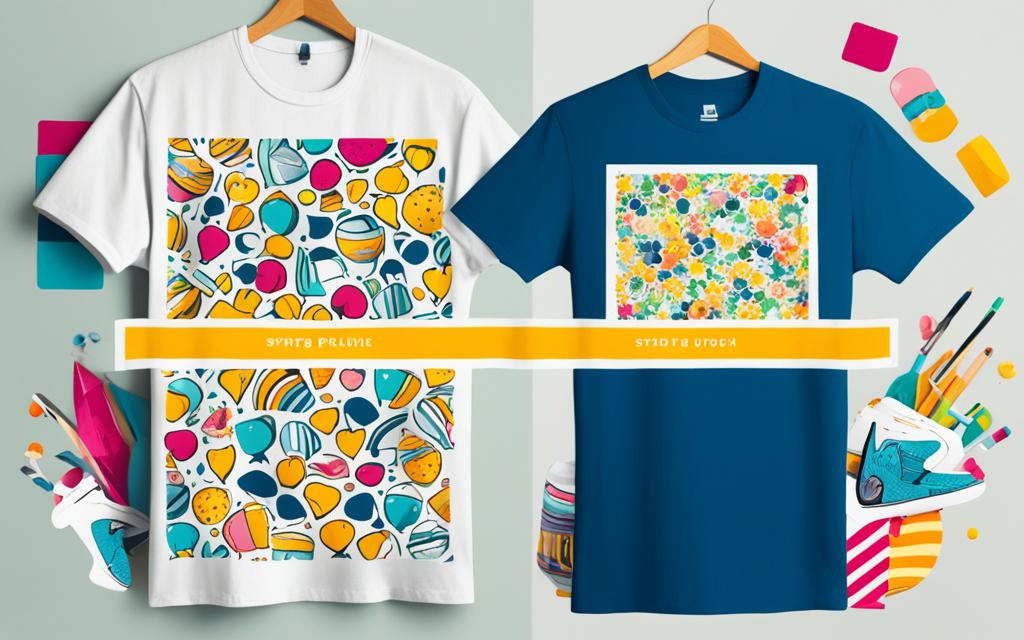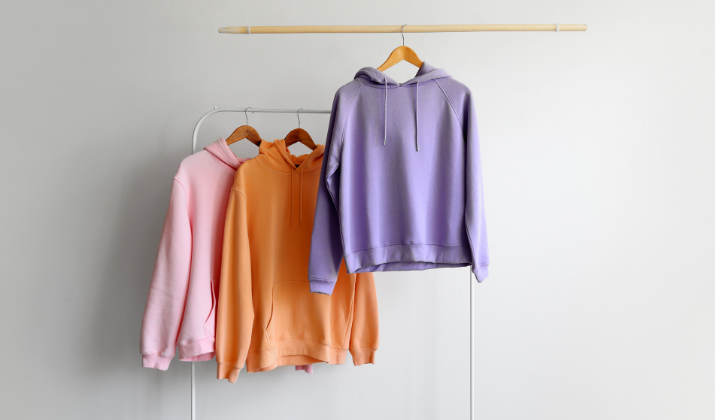Are you a creator, artist, or entrepreneur looking to sell your merchandise online?
If so, you may have come across two popular print-on-demand platforms: Fourthwall and Spring. But how do you know which platform is the best fit for your merchandising needs?
Both Fourthwall and Spring offer a range of products and services, but there are key differences that can greatly influence your decision.
When it comes to selling your merchandise, it’s important to choose the platform that aligns with your goals and provides the right tools for success.
So, let’s explore the differences between Fourthwall and Spring to discover which one suits your merchandising needs better.
Fourthwall vs Spring – Features and Pricing
When it comes to features and pricing, both Fourthwall and Spring offer a range of options to meet the needs of creators.
Let’s take a closer look at what each platform has to offer.
Fourthwall
Fourthwall provides creators with a comprehensive set of features to support their merchandising efforts.
Here are some key features offered by Fourthwall:
- Create Websites: With Fourthwall, you can easily create your own customizable website to showcase and sell your products.
- Source and Sell Products: Fourthwall offers a wide range of merchandise options, including clothing, accessories, and digital products.
- Offer Memberships: You have the option to offer membership subscriptions to your fans and supporters, providing exclusive content and benefits.
In addition to these features, Fourthwall boasts an easy-to-use platform, ensuring a smooth and hassle-free experience.
Their pricing structure is product-based, with no monthly fees, upfront costs, or contracts. This transparent pricing model allows you to set your own margins and maintain control over your profit margins.
Also Read: Redbubble vs Spring
Spring
Spring also offers a variety of features designed to support creators in their merchandising journey.
Check out some of the features provided by Spring:
- Create Websites: Similar to Fourthwall, Spring enables you to build your own branded website to showcase and sell your merchandise.
- Source and Sell Products: Spring offers an extensive product catalog, allowing you to choose from a wide range of items to sell.
- Integrate with E-commerce Platforms: Spring integrates seamlessly with popular e-commerce platforms like Shopify and WooCommerce, providing flexibility and convenience.
Like Fourthwall, Spring also focuses on user-friendliness and excellent customer support. Their pricing structure is based on product types, with no hidden fees or upfront costs. They offer competitive pricing to help you maximize your profits.
Now that we have explored the features and pricing models of both Fourthwall and Spring, let’s move on to the next section to delve into their respective product catalogs and printing options.
Check Out: Teepublic vs Spring
Fourthwall vs Spring – Product Catalog and Printing Options
When it comes to merchandising, having a diverse product catalog and flexible printing options can make all the difference.
Both Fourthwall and Spring offer a wide range of choices to meet your specific needs. Let’s take a closer look at what each platform has to offer.
Fourthwall
Fourthwall provides creators with a comprehensive product catalog, giving you the freedom to choose from a variety of high-quality merchandise.
Whether you’re looking to sell clothing, accessories, or digital products, Fourthwall has got you covered. Their catalog includes:
| Clothing | Accessories | Digital Products |
|---|---|---|
| T-shirts | Phone cases | E-books |
| Hoodies | Tote bags | Online courses |
| Sweatshirts | Hats |
With Fourthwall, you have the flexibility to choose the products that align with your brand and resonate with your audience. Their high-quality printing ensures that your designs look their best, no matter the product.
Spring
Spring also offers a diverse product catalog that caters to creators’ merchandising needs.
Whether you’re looking for apparel, home goods, or accessories, Spring has a wide selection of products for you to choose from. Their catalog includes:
| Apparel | Home Goods | Accessories |
|---|---|---|
| T-shirts | Pillows | Phone cases |
| Hoodies | Mugs | Tote bags |
| Sweatshirts | Blankets |
With Spring, you have the flexibility to showcase your designs on a range of products, allowing you to cater to different customer preferences and expand your merchandising offerings.
Also Read: Printful vs Fourthwall
Fourthwall vs Spring – Printing Options
Both Fourthwall and Spring offer various printing options to ensure your designs are produced with the highest quality.
Whether you prefer screen printing, direct-to-garment printing, or embroidery, both platforms have the capabilities to bring your designs to life.
Fourthwall also provides the option to order samples, allowing you to verify the product quality before bulk ordering. This ensures that you and your customers receive products that meet your expectations.
Spring focuses on direct-to-garment printing, providing vibrant and long-lasting prints on their apparel and accessories. Their printing technology ensures that your designs look professional and eye-catching.
With both platforms, you can trust that your designs will be accurately and beautifully printed, making a lasting impression on your customers.
Fourthwall vs Spring – Integrations and Additional Features
When it comes to integrations and additional features, Fourthwall and Spring offer a range of options to enhance the creator’s experience and streamline their merchandising process.
Fourthwall
Fourthwall provides seamless integrations with various platforms and tools, allowing creators to connect with their existing audience and expand their reach.
Some of the notable integrations include:
- YouTube: Amplify your merchandise sales by integrating Fourthwall with your YouTube channel. Promote your products to your subscribers and generate additional revenue.
- Twitch: Monetize your Twitch streams through Fourthwall’s integration. Showcase your merchandise to your loyal fan base and turn your passion into profit.
- Facebook: Leverage the power of social media by integrating Fourthwall with your Facebook page. Easily sell your products to your followers and engage with your community.
- Instagram: Transform your Instagram presence into a thriving online store with Fourthwall’s integration. Drive traffic to your merchandise and increase your sales with ease.
- And more: Fourthwall offers many other integrations, allowing creators to maximize their visibility and connect with their target audience across various platforms.
On top of integrations, Fourthwall offers a range of additional features designed to enhance the creator’s merchandising journey. These features include:
- Personalized Thank You Videos: Engage with your supporters by sending them personalized thank you videos for their purchase. This thoughtful touch helps build a stronger connection with your audience.
- Membership Options: Provide exclusive perks and content to your loyal supporters through Fourthwall’s membership feature. Offer special discounts, early access, and behind-the-scenes content to incentivize recurring support.
- Members-Only Discord Server: Foster a sense of community among your supporters with Fourthwall’s members-only Discord server. Connect with your most dedicated fans and create a space for them to interact with each other.
Also Read: Threadless vs Fourthwall
Spring
Teespring offers various features and integrations that enable users to create and sell custom products, such as t-shirts, hoodies, and phone cases.
Some of the key features and integrations include:
- Shopify Integration: Teespring can be integrated with Shopify, allowing users to manage their Teespring store directly from their Shopify site. This integration simplifies the management of products, orders, and customer data.
- Google Shopping Integration: Teespring has partnered with Google Shopping, enabling users to create shopping campaigns and scale their sales during the holiday season.
- Zapier Integration: Teespring can be integrated with Zapier, a third-party application that bridges the gap between Teespring and other platforms. This integration allows for the import of products and the automation of order fulfillment.
Teespring offers a list of integrations and software that can be used to enhance the functionality of the platform. These integrations can be viewed on the Teespring Integrations page on SourceForge.
Also Read: Fourthwall vs Spreadshirt
Conclusion
When it comes to choosing the right platform for your merchandising needs, Fourthwall and Spring both offer enticing features and services. However, considering your specific requirements and goals is crucial in making an informed decision.
Fourthwall stands out with its comprehensive platform that encompasses a wide range of features. From creating websites to sourcing and selling products, Fourthwall offers a seamless experience for creators, artists, and entrepreneurs.
They also provide extensive customization options, allowing you to tailor your merchandise to your brand and vision.
Additionally, Fourthwall’s pricing structure is transparent and affordable, with no monthly fees, upfront costs, or contracts.
This flexibility empowers creators to set their own margins and maximize profitability. Alongside their exceptional customer service and valuable resources, Fourthwall prioritizes your success as a creator.
While Spring is a prominent print-on-demand platform, Fourthwall’s robust offerings and commitment to customer satisfaction make it a compelling choice.
Whether you prioritize a diverse product catalog, integrations with popular platforms such as YouTube or Facebook, or a seamless all-in-one solution, Fourthwall is well-equipped to meet your merchandising needs.









